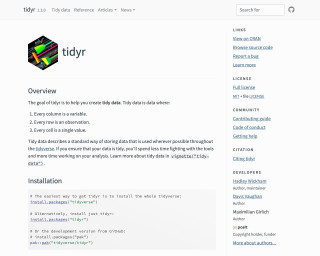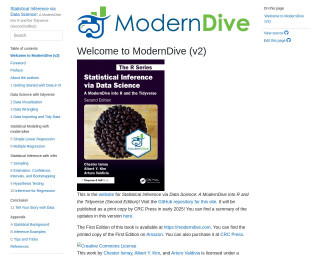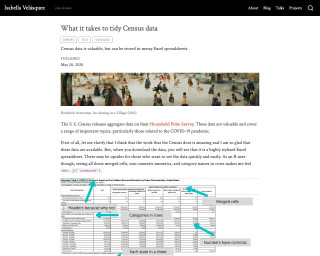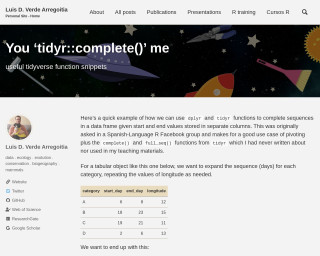Resources
This carefully curated collection of resources will help you find packages and learning resources to help you on your R journey.

tidyr
The `tidyr` package in R is used to create tidy data, where every column is a variable, every row is an observation, and every cell is a single value. It provides functions for pivoting, rectangling, nesting, splitting and combining character columns. The package supersedes `reshape2` and `reshape` and is designed specifically for tidying data. It has an active community and a Contributor Code of Conduct.
Go to Resource

Welcome to ModernDive (v2) | Statistical Inference via Data Science
ModernDive (v2) is the website for 'Statistical Inference via Data Science: A ModernDive into R and the Tidyverse (Second Edition)'. It showcases updates from the first edition, which is available online and for purchase. The book, authored by Chester Ismay, Albert Y. Kim, and Arturo Valdivia, teaches R and data science concepts. It's scheduled for print by CRC Press in 2025 and is licensed under Creative Commons. Readers can contribute on GitHub and anticipate a resource-rich approach to stats with a focus on tidyverse tools for data analysis.
Go to Resource

What is Takes to Tidy Census Data
This article explains the process of tidying Census data using R and tidyverse packages.
Go to Resource

You ‘tidyr::complete()’ me
Luis D. Verde Arregoitia's article demonstrates using the 'complete()' function from the tidyr package to expand a data frame's sequences based on start and end values within columns. The example showcases how to pivot data and use 'complete()' and 'full_seq()' functions for filling in sequences of days for different categories, while repeating longitude values accordingly. This technique is useful for managing tabular data in wide format, facilitating transformations into a long format ready for analysis. The article is instructional for those working with R in ecology, conservation, and biogeography, focusing on data wrangling challenges.
Go to Resource